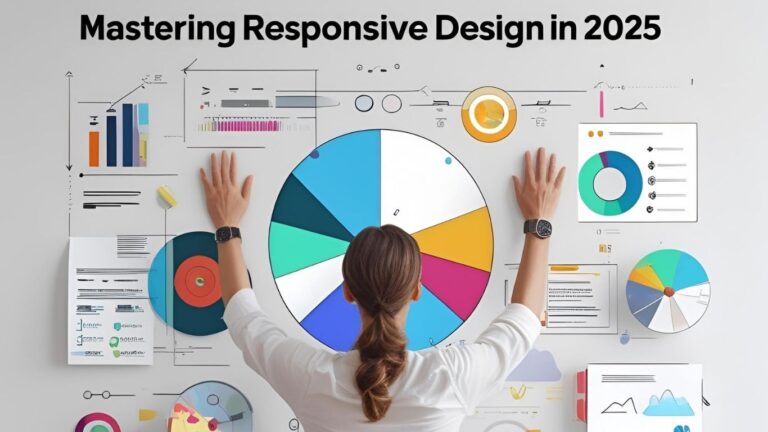5 Steps on How Data Privacy in Marketing Builds Customer Trust #Marketing #Privacy #GDPR
5 Steps on How Data Privacy in Marketing Builds Customer Trust
Introduction to Data Privacy in Marketing
Data Privacy in Marketing is no longer a silent whisper in the corridors of digital strategy; it has become the loud heartbeat that keeps modern brands alive. Imagine a marketplace where every stallkeeper knows not only your name but also your secret preferences, your browsing history, even the number of times you hesitated before buying something. Would you feel safe—or would you retreat, guarding your wallet and heart?
Today, customers are that cautious traveler. They want personalization, but they demand privacy. Regulations like GDPR and CCPA have made it clear: protecting data is not simply a legal checkbox, it’s the currency of trust. And in a world oversaturated with ads, that trust becomes more valuable than gold.
For marketers, this shift is both a challenge and an opportunity. Challenge, because careless practices invite penalties and public shame. Opportunity, because respecting privacy opens doors to deeper, lasting relationships. As I see it, Data Privacy in Marketing is not about locking data away—it’s about handing customers the keys, showing them that their information rests safe in your hands.
And so, the journey begins: five steps to transform compliance into connection, and obligation into opportunity.
Step 1: Understand Legal Frameworks
When I first read about GDPR, I thought of it like a stern schoolteacher, setting boundaries with uncompromising rules. The same goes for CCPA—laws designed not to suffocate creativity but to protect the students in the classroom, the consumers in the marketplace.
Marketers often ask, “Why should I care so much about legal jargon?” The answer is simple: ignorance is expensive. Fines under GDPR can rise to millions, but beyond the financial hit lies something worse—losing your audience’s faith. Data Privacy in Marketing begins with knowing the terrain you’re walking on.
Here’s how to navigate:
- Learn the basics of GDPR and CCPA. GDPR emphasizes consent, data minimization, and the right to be forgotten. CCPA grants consumers transparency and control.
- Audit your data collection. Do you really need every single piece of information you ask for? Asking for too much is like a stranger demanding the keys to your home. Customers walk away.
- Avoid costly compliance mistakes. Even a poorly worded consent form can be a trap. Partnering with privacy management platforms (like OneTrust or Termly) ensures you don’t miss critical details.
Think of this step as laying the foundation of your house. Without legal understanding, every marketing tactic you build above is at risk of crumbling. But once your framework is strong, you can build walls of trust and a roof of creativity.
And remember, Data Privacy in Marketing isn’t about fear—it’s about assurance. When you show customers that you respect the law, you’re also showing that you respect them.
Step 2: Build Transparency with Customers
When you walk into a friend’s home, they don’t hide the light switch or the water tap. They show you, with open hands, where everything is. That’s what transparency feels like in marketing. Customers don’t want you fumbling in the shadows with their data; they want to see the light switch clearly.
Data Privacy in Marketing thrives on transparency. A well-crafted consent form isn’t just legal jargon—it’s an invitation. It says: “We respect your choice. You decide what we know and how we use it.” This small act turns a faceless company into a trusted partner.
Practical ways to build transparency:
- Consent management platforms (CMPs): Tools like TrustArc and Usercentrics simplify compliance while showing users exactly how their data is handled.
- Layered notices: Instead of long, unreadable policies, provide summaries with the option to dive deeper. It’s like giving someone a map before asking them to explore.
- Two-way communication: If a customer asks how you use their data, answer directly. Silence breeds suspicion.
Here’s the truth: every transparent act adds one brick to the wall of trust. And when that wall is built, customers feel safe enough to lean against it.
So, don’t just comply—communicate. Don’t just collect—explain. Transparency turns the cold legality of compliance into the warm glow of honesty, and that glow keeps customers coming back.
Step 3: Balance Personalization and Privacy
There’s a delicate dance in marketing: too much data collection feels intrusive, too little feels impersonal. It’s like seasoning food—overdo it, and the dish is ruined; underdo it, and it’s bland.
Marketers crave personalization because it fuels conversions. But here’s the irony: the very act of over-personalizing often erodes trust. Customers don’t want you to know the color of their bedroom curtains; they want you to know their preferences without prying into their souls. Data Privacy in Marketing is the art of seasoning—adding just enough to delight without overwhelming.
How to master this balance:
- Collect only what you need. A customer’s email and purchase history may be enough; you don’t need their mother’s maiden name.
- Use anonymized data. Instead of tracking a single user’s every move, look at aggregated patterns. Tools like Google Analytics 4 and Piwik PRO give insights without peeking under the customer’s curtain.
- Personalize ethically. Imagine you’re a shopkeeper. It’s fine to remember a customer likes green scarves, but creepy to mention you know they walked past your store three times last night.
Personalization, when done right, feels like kindness. It’s the smile of a shopkeeper who remembers your last purchase—not the stalker lurking in your backyard.
By respecting boundaries, you transform personalization from manipulation into magic. That’s where trust grows, and where marketing turns into a lasting relationship.
And in this balancing act, always remember: Data Privacy in Marketing is not about choosing between privacy or personalization—it’s about weaving them together into a fabric that feels comfortable for the customer to wear.
Step 4: Secure Data with Technology
I often think of customer data as a set of precious letters—intimate, handwritten notes that a friend has entrusted to you. Would you toss them into an unlocked drawer, or would you place them in a fireproof safe? The answer defines how seriously you treat security.
Data Privacy in Marketing doesn’t survive on words alone—it needs technology to guard its heart. Breaches are no longer rare headlines; they’re daily reminders of how fragile digital trust can be. One slip, one unpatched firewall, and years of credibility can collapse like a house of cards.
Here’s where technology becomes your shield:
- Encryption: Whether it’s AES-256 or SSL certificates, encryption scrambles sensitive data into unreadable language for outsiders.
- Access controls: Not everyone in your organization should see everything. Role-based permissions are like giving keys only to those who truly need them.
- Firewalls & monitoring: Tools such as Cloudflare and Sucuri don’t just block intruders—they raise alarms when suspicious activity creeps in.
Affiliate/CPA opportunity: If you’re unsure where to begin, platforms like NordLayer or 1Password Business make enterprise-grade security accessible for even small teams.
Think of Step 4 as building locks on every door and windowsill in your brand’s digital home. Customers don’t see these locks, but they feel their comfort. And when your brand whispers, “Your secrets are safe with us,” it’s not a metaphor—it’s a promise backed by technology.
Step 5: Create a Privacy-First Culture
Policies and technologies are nothing if the people behind them don’t care. You could build the tallest walls, but if a careless guard leaves the gate open, what’s the point? That’s why the final step is about people, not just processes.
Data Privacy in Marketing flourishes only when your entire team breathes the same ethic. It isn’t the job of a lone compliance officer—it’s the collective heartbeat of your organization.
How to build this culture:
- Train your team: Just as chefs wash their hands before cooking, marketers must learn the hygiene of data ethics. Workshops, webinars, and micro-courses keep awareness alive.
- Embed privacy in every campaign: Before sending an email or launching an ad, ask: Does this respect the customer’s trust? If the answer is no, rework it.
- Celebrate privacy wins: Reward employees who spot risks or suggest ethical practices. Make privacy part of your brand’s DNA, not a bolt-on afterthought.
Affiliate/CPA hook: Tools like Udemy for Business or LinkedIn Learning offer ready-to-use courses for team training in privacy and compliance—perfect for weaving into HR programs.
When culture shifts, everything else follows. Imagine walking into a bakery where everyone—from the cashier to the baker—knows the recipe for safety and trust. That’s what customers sense when privacy is woven into every fiber of your brand.
And at this point, you’re no longer just practicing Data Privacy in Marketing—you’re embodying it.
Why Customer Trust is the New Currency
In a world where advertisements chase us like persistent street vendors, trust has become the only currency that truly matters. You can’t buy it with discounts or bribes; you can only earn it, slowly and sincerely.
Data Privacy in Marketing is the golden coin of that trust. Customers who feel secure are more willing to share their details, engage with your emails, and return for future purchases. When they believe you’ll never misuse their data, they reward you with loyalty—often more valuable than a one-time sale.
Case studies prove this truth:
- Brands that publicize their privacy-first approach often see higher engagement rates.
- According to surveys, over 70% of consumers are more likely to buy from companies that explain how they use data.
Affiliate angle: Platforms like HubSpot CRM or ActiveCampaign emphasize transparent data usage while enabling deep personalization—tools that not only boost trust but also conversions.
Trust is not a metric you find in spreadsheets—it’s a feeling. And like love, once broken, it’s painfully difficult to repair.
Turning Compliance Into Competitive Advantage
Many marketers treat compliance like a tax—a burden, unavoidable but joyless. But what if you flipped the script? Imagine compliance not as a weight, but as wings. That’s the perspective that transforms obligation into advantage.
Data Privacy in Marketing allows you to stand out. Instead of hiding your compliance measures, advertise them. Tell your audience: “We’re not just meeting the rules—we’re exceeding them.” Suddenly, privacy isn’t a cost; it’s a unique selling point.
Examples worth noting:
- Apple famously promotes privacy as a brand value. Their ads don’t just highlight devices—they highlight trust.
- Smaller e-commerce shops are now displaying “GDPR-ready” or “CCPA-compliant” badges, boosting consumer confidence instantly.
Affiliate hook: Services like Trustpilot or Seal Subscriptions let you showcase compliance badges and trust certifications—visual cues that transform skepticism into confidence.
By embracing compliance as a marketing story, you’re no longer following rules reluctantly—you’re building trust proactively.
Data Privacy Myths Marketers Must Stop Believing
Every field has its myths, and privacy is no exception. The danger isn’t just in believing them—it’s in how they quietly sabotage your growth.
Myth 1: Privacy kills personalization.
Truth: It enhances it. Customers are more likely to share authentic data when they know it’s respected.
Myth 2: Small businesses don’t need compliance.
Truth: Regulations apply universally, and small businesses often face harsher customer scrutiny because they lack established reputations.
Myth 3: Privacy is only about legal risks.
Truth: It’s about emotional safety. Customers don’t think in laws—they think in feelings.
Affiliate hook: Solutions like Termly’s Privacy Policy Generator or iubenda offer affordable compliance tools designed for startups and SMEs—perfect myth-busters for the “too small to care” mindset.
Remember: Data Privacy in Marketing is not about limiting creativity—it’s about elevating it by working within a framework that customers can trust. Myths only cloud the horizon; truth clears the path forward.
Tools and Resources for Marketers
A craftsman is only as good as his tools, and the same holds true for marketers. You may have the best intentions, but without the right resources, privacy remains a noble dream rather than a working reality.
Here are some essentials every marketer should consider:
- Consent Management Platforms (CMPs): Tools like Usercentrics or TrustArc simplify user consent collection and ensure you meet GDPR/CCPA requirements.
- Analytics with privacy built-in: Instead of relying solely on Google Analytics, try Piwik PRO or Fathom Analytics, which prioritize data protection while still providing valuable insights.
- Customer Relationship Management (CRM): Privacy-conscious CRMs like HubSpot or Zoho CRM help you personalize campaigns without compromising compliance.
- Privacy Policy Generators: Services such as Termly and iubenda create legally sound policies, sparing you from costly legal consultations.
Data Privacy in Marketing thrives on the backbone of these tools. The investment is not just about avoiding fines—it’s about proving to customers that you value their security as much as their business.
Future of Data Privacy in Marketing
When I think about the future, I picture it like a chessboard: every move by technology reshapes the game, and marketers must learn to anticipate, not just react.
Artificial intelligence will soon play a pivotal role. Smart algorithms can analyze anonymized data, offering insights without breaching individual privacy. Similarly, blockchain technology may transform consent tracking into something transparent and tamper-proof.
Emerging global regulations will also push brands toward harmonization. It won’t just be about GDPR or CCPA anymore—expect Asia, Africa, and South America to introduce their own robust frameworks.
Affiliate hook: AI-powered compliance platforms like BigID or OneTrust AI are already positioning themselves as the next-generation allies for marketers.
The key takeaway? The future isn’t about restricting marketing creativity—it’s about creating a new language of trust, where Data Privacy in Marketing evolves hand-in-hand with innovation.
Common Mistakes to Avoid
Even well-meaning marketers stumble. The danger lies not just in the mistakes, but in failing to see them as red flags.
Here are some pitfalls to sidestep:
- Over-collecting data: Asking for unnecessary details is like a shopkeeper demanding your passport before selling you bread. Customers walk away.
- Ignoring customer concerns: A single unanswered privacy question can spiral into public distrust.
- Outdated policies: Regulations change—your privacy policy should too. Static documents invite legal trouble.
- Over-reliance on third parties: Handing customer data to unchecked partners can backfire if they mishandle it.
Affiliate hook: Regular compliance audits with services like Vanta or Drata help ensure your systems stay sharp and up-to-date.
Remember: in Data Privacy in Marketing, even small mistakes leave large scars. Prevention is not just cheaper—it’s wiser.
Key Metrics to Measure Privacy Success
Trust may feel intangible, but you can measure its signals like a doctor checking a patient’s pulse.
Important metrics include:
- Consent rates: High acceptance means customers trust your requests.
- Opt-out rates: A sudden spike may indicate poor communication or intrusive tactics.
- Customer satisfaction scores (CSAT): Privacy-friendly practices often boost overall brand perception.
- Complaint volume: Fewer privacy-related complaints signal healthy compliance.
Affiliate hook: Platforms like Sprout Social or Qualtrics offer survey tools that can gauge trust and satisfaction directly from your audience.
By tracking these metrics, you turn trust from a fuzzy idea into a quantifiable asset. And when you present these numbers, you don’t just prove compliance—you prove commitment.
Conclusion & Call to Action
When all the dust of regulation, tools, and strategies settles, what remains at the core is something timeless: trust. And that trust is built, nurtured, and guarded through one simple principle—Data Privacy in Marketing.
Think of it like this: every campaign you launch, every email you send, every form you ask a customer to fill is like knocking on their door. If they open it, it’s because they believe you won’t abuse the welcome. Fail them once, and the door closes forever.
We’ve walked through five steps:
- Understanding the laws that protect your audience.
- Building transparency that feels like friendship.
- Balancing personalization with respect for boundaries.
- Securing data with technology’s strongest locks.
- Creating a culture where every team member carries the torch of privacy.
Follow these, and you’re not just avoiding fines—you’re crafting relationships that endure. Customers who trust you will not only buy from you; they’ll champion you.
And here’s the opportunity: every marketer who embraces privacy-first strategies is also embracing growth. That’s why now is the time to act.
🔹 Bullet-Point Summary
- Data Privacy in Marketing is the foundation of modern trust-driven marketing.
- Customers expect personalization without feeling their privacy is compromised.
- GDPR and CCPA compliance are essential—not optional.
- Transparency through clear consent builds loyalty.
- Over-collecting data creates distrust and reduces conversions.
- Smart personalization balances relevance and respect.
- Strong security (encryption, access control, firewalls) protects brand reputation.
- A privacy-first culture ensures every team member values customer data.
- Trust is the new marketing currency, often more valuable than discounts.
- Myths like “privacy kills personalization” prevent real growth.
- Tools such as Usercentrics, Piwik PRO, OneTrust AI, Termly streamline compliance.
- Privacy can transform compliance from a burden into a competitive edge.
- Future trends include AI-driven compliance and blockchain-based transparency.
- Measuring metrics like consent rates and opt-outs helps monitor success.
- Privacy-first brands grow stronger customer advocacy and brand loyalty.
🔹 FAQs on Data Privacy in Marketing
Q1: What does Data Privacy in Marketing really mean?
A: It refers to how marketers collect, store, and use customer information responsibly. It ensures compliance with laws like GDPR and CCPA while building consumer trust. It’s about showing respect, not just following rules.
Q2: Why is customer consent so important?
A: Consent ensures transparency. When people know what data is collected and why, they feel in control. This increases loyalty and prevents legal risks.
Q3: How does GDPR affect small businesses?
A: GDPR applies to all companies handling EU citizens’ data, regardless of size. Small businesses must ensure clear consent, limited data collection, and secure handling.
Q4: Can personalization and privacy work together?
A: Yes. By using anonymized data, limited collection, and ethical personalization, you can deliver value while respecting boundaries.
Q5: What are the biggest risks of ignoring privacy?
A: Fines, lawsuits, reputational damage, and customer loss. Trust, once broken, is hard to repair.
Q6: Are there affordable tools for compliance?
A: Absolutely. Services like Termly, iubenda, and Piwik PRO offer budget-friendly compliance solutions.
Q7: How often should privacy policies be updated?
A: At least once a year or whenever laws or data practices change.
Q8: Do customers really care about privacy?
A: Yes. Studies show more than 70% of consumers prefer brands that protect their data.
Q9: What’s the future of Data Privacy in Marketing?
A: AI-driven compliance, blockchain-based consent tracking, and global standardization will shape the future.
Q10: How can teams stay educated about privacy?
A: Regular training via Udemy, LinkedIn Learning, or custom workshops helps embed privacy awareness in your culture.
Q11: What’s the difference between GDPR and CCPA?
A: GDPR focuses on EU citizens’ rights like data portability, while CCPA emphasizes transparency and consumer control in California.
Q12: How do opt-outs affect campaigns?
A: They reduce short-term reach but improve long-term trust. Respecting opt-outs enhances brand credibility.
Q13: Can privacy be a competitive advantage?
A: Yes. Companies that showcase their privacy efforts attract loyal, high-value customers.
Q14: What metrics measure privacy success?
A: Consent rates, opt-out trends, complaint volumes, and customer satisfaction scores are strong indicators.
Q15: How can I explain privacy simply to customers?
A: Use plain language. Instead of legal jargon, say: “We collect your email to send you updates. You can unsubscribe anytime.”
Discover More with These Expert Resources
To deepen your grasp of Data Privacy in Marketing, it’s important to explore reliable and authoritative sources. Therefore, this curated list of outbound links will guide you toward valuable insights while enhancing your learning journey.
GDPR Official Website – European Union
→ Start here to understand the full scope of GDPR. Moreover, it provides practical explanations alongside the official text.
California Consumer Privacy Act (CCPA) – State of California
→ This site offers clear details on CCPA requirements. Consequently, it helps businesses operating in the U.S. comply with state-level privacy rules.
Pew Research Center – Public Attitudes Toward Data Privacy
→ Learn how consumers feel about privacy and security. In addition, this research highlights why trust is now central to marketing.
International Association of Privacy Professionals (IAPP)
→ A global hub for privacy professionals, offering certifications, news, and resources. Furthermore, marketers can use it to stay ahead of evolving laws.
Harvard Business Review – Why Privacy Is a Business Imperative
→ Although focused on strategy, this article shows how privacy can drive growth. As a result, it reframes compliance as opportunity.
Future of Privacy Forum
→ A think tank advancing responsible data practices. Additionally, it provides thought leadership on the balance between innovation and consumer trust.
OneTrust Blog – Privacy and Data Governance Insights
→ This blog covers practical guidance on compliance tools. As such, it’s a valuable resource for marketers seeking actionable advice.
World Economic Forum – Data Protection and Digital Trust
→ Explore global perspectives on digital trust. Ultimately, these insights help brands align with best practices worldwide.
🔹 Blog Recommendation
If you enjoyed this article and want deeper insights into modern marketing, I highly recommend visiting the GetRizwan Blog. It’s a hub of practical strategies and thought leadership for professionals navigating digital growth.
🔹 Linked Paragraphs with Internal/External Links
- Services: To explore expert solutions that help integrate privacy-first strategies directly into your business campaigns, check out GetRizwan’s Services. These tailored offerings align marketing performance with compliance.
- Portfolio: If you want to see how privacy-conscious strategies have transformed real businesses, browse the GetRizwan Portfolio. Case studies there highlight practical results achieved through trust-first marketing.
- Shop: For ready-to-use resources and digital products that support compliance and strategy, visit the GetRizwan Shop. It’s a great way to find affordable solutions quickly.
- LinkedIn: To connect with professionals driving innovation in marketing and privacy, follow Rizwan on LinkedIn. His updates provide insights and networking opportunities that keep you ahead.







